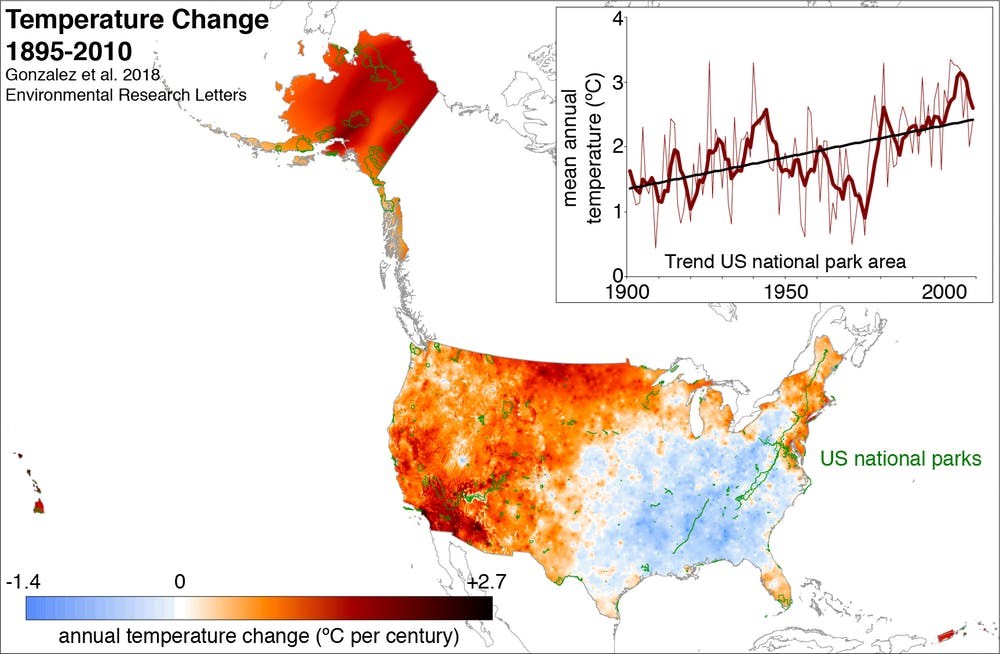Last updated: October 1, 2018
Article
Climate Corner, September 2018

Patrick Gonzalez, CC BY
Climate Change Impacts Hitting National Parks Hardest
A just-released paper offers the first comprehensive analyses of historical and projected temperature and precipitation trends across all 417 national parks. The results show that climate change has already impacted national parks more than other areas in the U.S., and that future effects will also likely be significant. The disproportionate effect of climate change on the parks is attributed to the fact that many are in places that are warming more, such as the Arctic, high elevations, or in the arid southwest.
Between 1895 and 2010, mean annual temperature change in the national parks was double that of the rest of the U.S. (1.0 °C ± 0.2 °C). Annual precipitation declined in 12% of national park areas, compared to 3% of the U.S. Looking ahead to 2000 to 2100, park temperatures would increase 3 °C–9 °C under the highest emissions scenario, and warming will be faster than many plants and animals can disperse. Even under a reduced emissions scenario, temperatures will still rise 2 °C for 58% of national parks compared to 22% of the US. However, the authors note that greenhouse gas emissions reductions could reduce these projected temperature increases for national parks by one-half to two-thirds.
The article is available for free on the Environmental Research Letters website along with accompanying supplementary information with results for each of the 417 national parks. You can also read a shorter summary by the article's author, Dr. Patrick Gonzalez, on The Conversation.
Chance of Weak El Niño This Winter
Models predict the onset of El Niño in the Northern Hemisphere sometime during the fall and continuing through the winter, though it may be mild. Current predictions are for a 50-55% chance of El Niño onset during fall 2018 (September-November), increasing to 65-70% during the winter of 2018-2019. Three-month forecasts are available and more information and updates are also available from the NOAA Climate Prediction Center.
